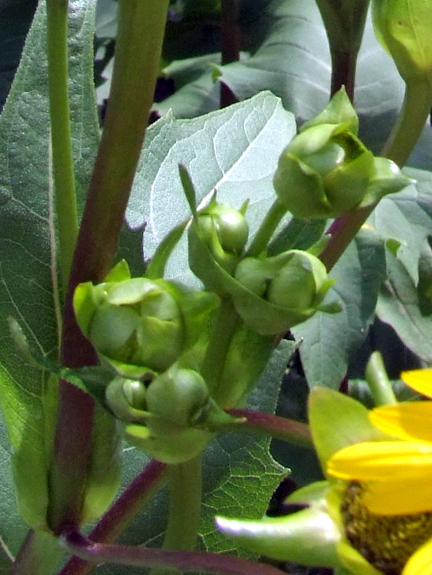| General Description | Silphium perfoliatum is a sunflower-like herbaceous perennial with tough, erect stems yellow flowers. |
| Landscape | Good for a low-maintenance backdrop to other perennials in rain or naturalized gardens. Will attract birds and butterflies. Needs lots of room to grow, can be weedy. Good for moist locations near water. |
| Propagation | By seed, will self-seed in ideal conditions. |
| Cultivation | Grow in full sun, in moist, rich soil. Tolerant of clay and wet soils as well as some drought once established. |
| Pests | No serious pests or diseases of note. |
| Habitat | Low woods and thickets, meadows, prairie stream or pond edges. |
| Leaf Description | Opposite, basally united in pairs and perfoliate to form a cup shape, broad at base, tapering to a point with coarse crenation (rounded teeth) and palmate venation (several primary veins diverging from a point). |
| Flower Description | Single, sunflower-like heads up to 7.5 cm in diameter with 20 - 40 long, narrow, bright yellow rays and darker yellow centres. |
| Texture Description | Coarse. |

